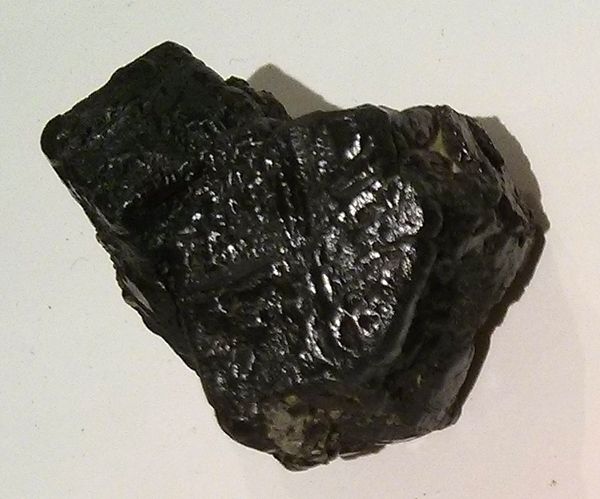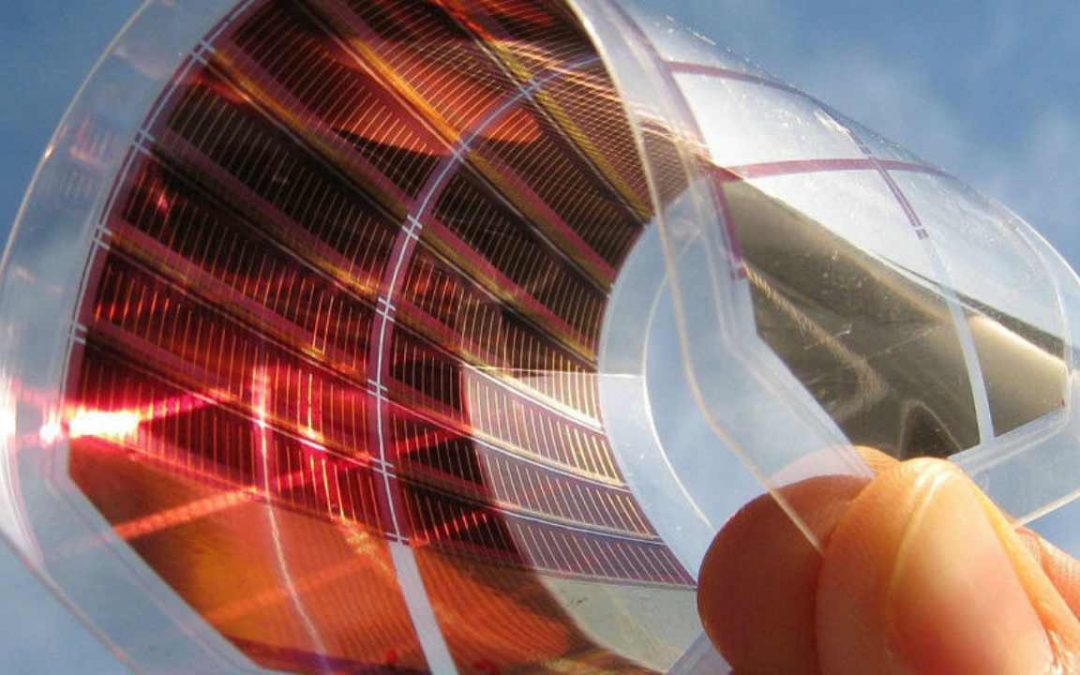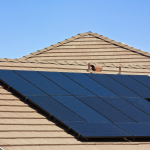Touted as the fastest-advancing solar technology, Perovskite is moving to a future where all Solar production will be Perovskite-based. Known as a 3rd generation Photovoltaic (PV), the solar industry is pushing this mineral to replace the current solar manufacturing processes and cement itself as the very foundation of solar production. As Solar technology enthusiasts, Static Electrics likes to keep up to date on advances in the industry.
Perovskite Composition
Photovoltaics is a phenomenon studied in physics that studies the conversion of light into electricity using semiconducting materials that exhibit the photovoltaic effect, aka solar power. Perovskite, like the silicon which powers most solar panels, is a material that produces this Photovoltaic effect.

A perovskite mineral (calcium titanate) from Kusa, Russia. Image via Wikipedia.
Perovskite is a calcium titanium oxide mineral composed of calcium titanate with a notable crystalline structure. Its name is also applied to the class of compounds which have the same type of crystal structure as CaTiO₃, known as the perovskite structure.
Perovskite vs Silicon Efficiency
SciTechDaily has a recent report on the accidental ability of Perovskite to exceed that of traditional silicon in both price and performance:
Scientists at the University of Cambridge studying perovskite materials for next-generation solar cells and flexible LEDs have discovered that they can be more efficient when their chemical compositions are less ordered, vastly simplifying production processes and lowering cost.
As with silicon materials, scientists assumed the more ordered the structure, the more efficient it is. With Perovskite, this is not the case at all. The more disordered it is, the more capable the material is for the photovoltaic effect.
Perovskite usage in Solar Cell Production
Crystalline Silicon is currently the most commonly used material for producing solar panels is though when we compare it to Perovskite-based solar cells, silicon isn’t as cost-effective to produce or is it the fastest process to manufacture. At the time of posting Perovskite is currently used in 2% of solar panels worldwide and with these recent advances in Perovskite, this number looks to increase dramatically in the future.
Perovskite is more Flexible
The usage of Perovskite material in solar production could also unshackle traditional solar cell technology and offer far more advances and use in the future:
- The lead salts used to make solar cells are much more abundant and cheaper to produce than crystalline silicon
- The components used to make the perovskite can be changed to give the materials different colours and structural properties
- You only need a very thin film of this perovskite material – around one thousand times thinner than human hair – to achieve similar efficiencies to the silicon wafers currently used
Perovskite Disadvantages
Despite the obvious advantages, It’s not all positive when it comes to Perovskite solar cell production. When Perovskite is broken down, one of its breakdown products is a toxic substance called Pbi and there is also the issue of lead being used in most Perovskite cell production. Despite these issues, the science behind this method of solar production is constantly improving as the benefits far outweigh the negatives.
Reference:
- https://www.perovskite-info.com/perovskite-solar
- https://scitechdaily.com/big-surprise-discovery-increases-perovskite-solar-cell-efficiency/













